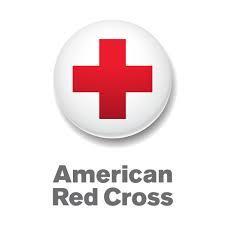
american-red-cross-offers-heat-safety-tips
High temperatures are expected throughout much of the Indiana region in the next few days. For this reason, it is important to take precautions to avoid heat exhaustion or heat stroke.
The American Red Cross offers steps you can take to help stay safe when the temperatures soar.
Hot cars can be deadly. Never leave children or pets in your vehicle. The inside temperature of the car can quickly reach 120 degrees. Stay hydrated by drinking plenty of fluids. Avoid drinks with caffeine or alcohol. Check on family, friends and neighbors who do not have air conditioning, who spend much of their time alone or who are more likely to be affected by the heat. If you do not have air conditioning, seek relief from the heat during the warmest part of the day in places like schools, libraries, theaters, malls, etc. Avoid extreme temperature changes. Wear loose-fitting, lightweight, light-colored clothing. Avoid dark colors because they absorb the sun’s rays. Slow down, stay indoors and avoid strenuous exercise during the hottest part of the day. Postpone outdoor games and activities. Take frequent breaks and use a buddy system when working outdoors. Check on animals frequently to ensure that they are not suffering from the heat. Make sure they have plenty of cool water and shade.
Excessive heat can lead to sunburn, heat cramps, heat exhaustion and heat stroke. If someone is experiencing heat cramps in the legs or abdomen, get them to a cooler place, have them rest, lightly stretch the affected muscle, and replenish their fluids with half a glass (about 4 ounces) of cool water every 15 minutes.
Heat Exhaustion
If someone is exhibiting signs of heat exhaustion (cool, moist, pale or flushed skin, heaving sweating, headache, nausea, dizziness, weakness and exhaustion), move them to a cooler place, remove or loosen tight clothing and spray the person with water or apply cool, wet clothes or towels to the skin. Fan the person. If they are conscious, give small amounts of cool water to drink. Make sure the person drinks slowly. Watch for changes in condition. If the person refuses water, vomits or begins to lose consciousness, call 911.
Heat Stroke
Heat stroke usually occurs by ignoring the signals of heat exhaustion. Heat stroke develops when the body systems are overwhelmed by heat and begin to stop functioning. Signs include hot, red skin which may be dry or moist; changes in consciousness; vomiting and high body temperature. Call 911 immediately if someone shows signs of heat stroke. Move the person to a cooler place. Quickly cool the person’s body by immersing them up to their neck in cold water if possible. Otherwise, douse or spray the person with cold water, or cover the person with cold, wet towels or bags of ice.
Risk Factors
Heat is the leading weather-related killer in the U.S. More than 600 people in this country die every year from heat-related illnesses, according to the Centers for Disease Control and Prevention (CDC).
Some people are more at risk of developing a heat-related illness, including adults over 65, those with chronic medical conditions, people who work outside, infants and children, and athletes. Some may take medications that make the effects of extreme heat worse. People with heart disease, poor blood circulation, obesity and mental illness are also at risk for getting sick if the temperatures climb.
For additional extreme heat safety tips, please click here. You can also download the Red Cross Emergency App to receive full weather alerts in Spanish as well as English to track conditions with six different weather overlays. More information here.


 Kandee Cook to serve as GIANT fm account executive in both Rockville and Greencastle
Kandee Cook to serve as GIANT fm account executive in both Rockville and Greencastle
 The Putnam County Museum announces Sunday opening hours
The Putnam County Museum announces Sunday opening hours




